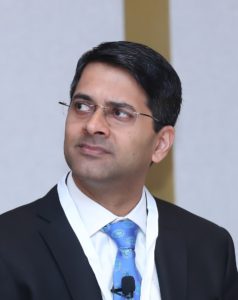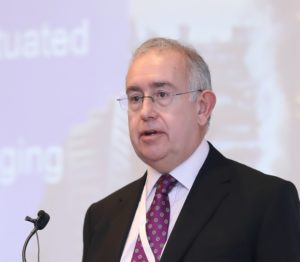Updating fire codes is not where the challenge lies, says company representative

Abhishek Chhabra, Market Development Manager, Thomas Bell-Wright International Consultants
Dubai, UAE, 12 December 2018: The Conference on Safety Design in Buildings, held on December 11, in Abu Dhabi, proved to be a platform for riveting discussion on ‘Assessing operational and business risks and incentives of retrofitting cladding for improved fire safety’. Amendments or changes made to a fire code are relatively easy, said Abhishek Chhabra, Market Development Manager, Thomas Bell-Wright International Consultants. The execution, he said, is where the challenge lies. “Driving change is a challenging task, which also involves making people aware of any updates to the code,” he said. Today, he added, the average contractor is being asked by the consultant about the materials being used in a building.
Susan Lamont, Fire Engineering Leader, ARUP, pointed to the raft of accommodation with respect to fire codes in the United Arab Emirates. She said, “Insurance companies today are increasing their premium to cater to the fire safety aspects in buildings.” The average age of buildings today ranges from 15 to 20 years and there is a reason why people look at retrofitting for fire safety as crucial, she added.

Gary Strong, Global Director of Building Standards, Professional Standards Directorate, RICS
Pointing to an existing challenge with reference to fire safety in existing buildings in the United Kingdom, Gary Strong, Global Director of Building Standards, Professional Standards Directorate, RICS, said, “Building owners in the United Kingdom are unwilling to disclose any information related to the materials being used.” On the other hand, Lamont offers a differing perspective on the subject. She said, “In the United Arab Emirates, the client is interested in knowing what materials are going into the building.” The various stakeholders are taking interest in the fire safety aspects of building systems and people are being proactive, while taking the initiative to probe into the quality and type of materials being used, she added. However, with regard to risk assessment in buildings, Chhabra said, “There is no known methodology that everyone can use to assess buildings for their risk in a fire.” This, he said, comes back to the fact that we need minds to come together and devise a method and solution by which risk can be assessed. Elaborating, Lamont also highlighted the importance of fire safety experts to come in at key stages in a project and check for approaches to making an existing or new building safe.
Copyright © 2006-2025 - CPI Industry. All rights reserved.